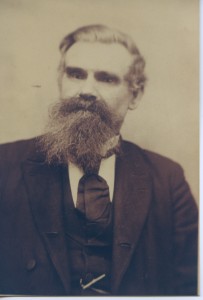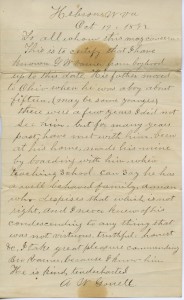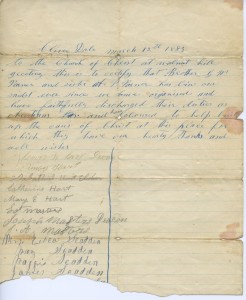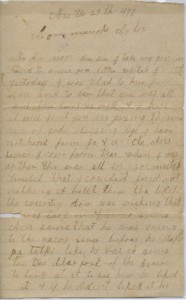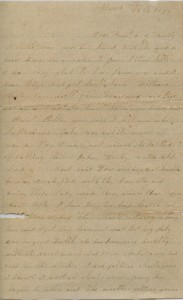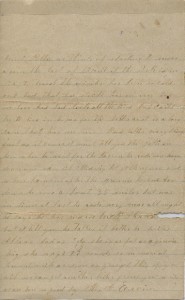Special Collections is proud to add another collection to its store of historical material. Descendants of pioneering preacher George Washington (G.W.) Varner generously donated remnants of Varner’s business and ministry career. After marrying Angela Virginia Daniel, Varner settled in Pleasant’s County, West Virginia. They successfully operated a farm in Cloverdale for many years where the Cloverdale Church of Christ was eventually planted. George and Angela Varner were both instrumental to the congregation’s organization. G.W. Varner also acted as a traveling evangelist in the Ohio River Valley. The collection includes letters written in the back of Varner’s small ledger books. Of special note within this collection are several letters of recommendation written by church members on his behalf endorsing him and his ministry.
These letters were used to certify the credibility of traveling preachers as good standing members of Christian communities, with well behaved families, and commendable oratorical skills. Often brief biographies were included in the letters detailing the burgeoning call to ministry seen in the preacher at a young age. They attested to his knowledge of Scripture as it was assumed that he closely studied the Bible. At the time rural preachers usually didn’t have formal education so these letters served as their means of establishing themselves in new communities. See below for two typical letters of recommendation used by George Varner, along with the transcriptions of the letters.
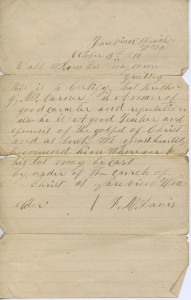
Letter of Recommendation for G.W. Varner written by one of the Elders of the Cloverdale, West Virginia congregation.
Transcription for Letter of Recommendation (1890)
Transcription for Letter of Recommendation (1892)
An interesting specimen found within this collection is a Letter of Recommendation for both George Varner and his wife, Angela Virginia Varner. When families moved from town to town they would usually transfer their membership from their previous congregation to another with the help of these letters of recommendation, written and signed by elders or deacons.This particular letter however is signed by the entire congregation, women included. It is possible that the Varners were moving to another area or that Angela traveled with G.W. at times.
Transcription for Letter of Recommendation (1883)
Another interest piece from this collection is a small ledger book Varner used as an all-purpose notebook. In this particular ledger one will find lists of business transactions (pages used as a check book) and payments made, letters of recommendation for Varner, and also Varner’s own scribbles. These personal notes seem to be sermon notes, devotional notes, or study notes Varner made while reading Scripture.
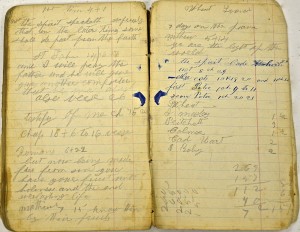
Small ledger book used by G.W. Varner as a check book and notebook for personal notes and letters of recommendation.
The Varner Papers are processed and available for research. Please contact us to schedule an appointment to view them in person, or review the finding aid and we can arrange for electronic document delivery.
Finding aid for George Washington Varner Papers, Center for Restoration Studies Manuscript # 295, is available in PDF and MS Word formats:
PDF: ACU_FindingAid_GeorgeWashingtonVarnerPapers_MS#295
MS Word: ACU_FindingAids_GeorgeWashingtonVarnerPapers_MS#295

